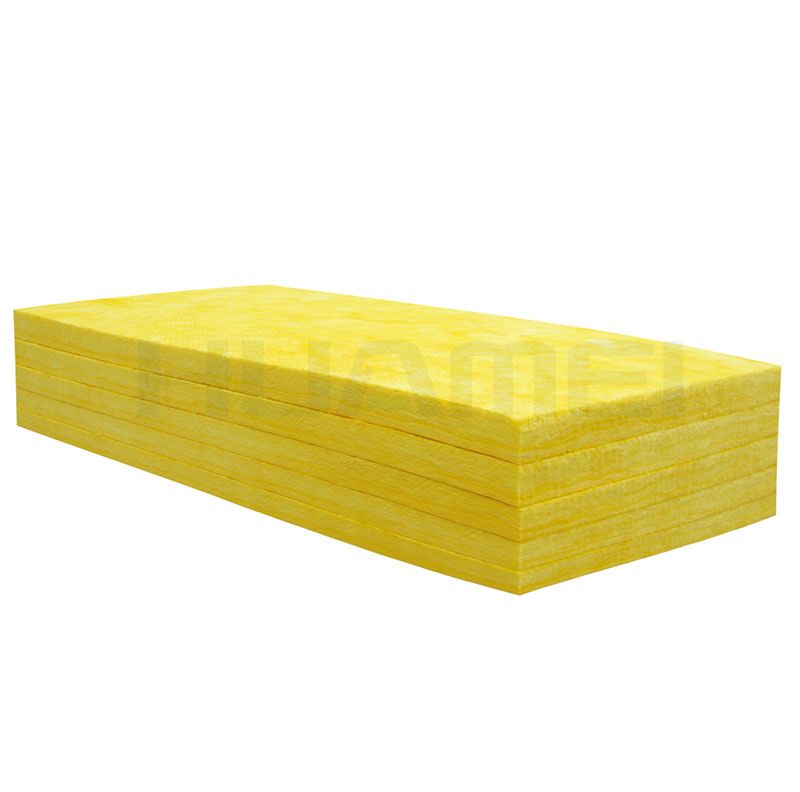Today Glass Wool Manufacturer introduces the difference between glass wool and rock wool.
1: Different production materials and processes
Centrifugal glass wool uses glass as the main raw material and mixes it with other various auxiliary materials in a certain proportion. After mixing, it is sent to a glass furnace for full melting. The melted solution flows out through the leak plate and enters the centrifuge. Driven by a high-speed centrifuge, the centrifuge runs at high speed to throw the glass into a thin stream of glass. Under the action of high-temperature and high-speed flames, the glass stream is further stretched into fibers, and then an atomizing adhesive is applied to the cotton mesh. Under the negative pressure of the belt, the fibers with the resin binder settle on the moving mesh belt to form a uniform cotton felt, and then pass through a constant temperature curing oven to complete the curing process. After the product is shaped, it will be cut after shaping. Pre-ordered products and then packed.
Rock wool products are made of refined basalt as the main raw material. After being melted at high temperature, inorganic fibers are made by high-speed centrifugal equipment, and then special adhesives and dust-proof oil are added to spread the felt through swing belts and the fiber arrangement structure is changed by special equipment. A new type of lightweight thermal insulation material made by curing and setting. It can be processed into rock wool board, rock wool felt, rock wool shell and other products according to different uses.
2: acoustic performance
Both Glass Wool and Rock Wool have sound insulation properties. As sound insulation cotton, 24kg / m3 centrifugal glass wool has the same sound insulation performance as 80kg / m3 rock wool.
Glass Wool
3: price comparison
Under the condition that the price per square meter of glass wool and rock wool is basically the same, more costs are saved in other links such as transportation and construction.
4: Hydrophobic performance
Glass wool will not be broken due to water immersion and rain, and it will be easy to dry by itself after being soaked in water, and its performance is stable. Rock wool collapsed immediately after being soaked in water, and its performance was greatly lost.
5: useful life
Glass wool does not cause pulverization and sharp decline in performance. The service life is up to 30 years. Rock wool is easily pulverized. After a certain period of time, slag balls will fall and even crack.
Characteristics of glass wool
1: recycling
The raw materials of the product are composed of natural quartz sand, soda ash, and recycled broken glass. The particle size of the raw materials is strictly controlled, and the mixture is uniform and sufficient to facilitate melting.
2: Adiabatic insulation
The slender glass fibers are closely intertwined, and the rich air layer inside plays a good role in heat insulation, which is an efficient thermal insulation material.
3: sound insulation and sound absorption
The internal fibers are fluffy and staggered, and there are a lot of tiny pores. They are typical porous sound-absorbing materials with good sound-absorbing properties.
4: Convenient transportation
The fiber is slender, and the rolled felt products are vacuum packed, which can save a lot of transportation and storage costs after compression.
5: easy to carry
Low bulk density, light weight, small size, suitable for on-site handling.
6: high construction efficiency
The rolled felt products are soft in texture, easy to be cut on site, and laid whole, saving labor time and improving construction efficiency.
7: safety fire protection
Class A non-combustible material, at 350 ℃ high temperature, the same performance, no toxic and harmful gas in the fire, no smoke, no slag, no flame spread
8: Durable
The fiber is tightly connected and does not contain slag balls. It will not deform and accumulate under vibration. It can be guaranteed for 30 years without falling.
9: health and safety
It does not contain slag balls and is not irritating to the skin, ensuring the health and safety of personnel.
10: Green
The raw materials of the products are all from the abundant minerals in nature, which are non-toxic and pollution-free.
The above is the difference between glass wool and rock wool introduced by Glass Wool Pipe Supplier.

评论
发表评论